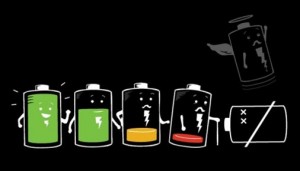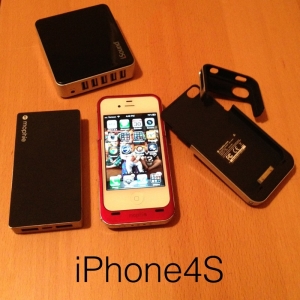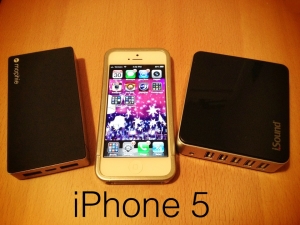
Smartphones are incredibly useful for real estate professionals, but how do you save their lives when their battery power is dwindling!
By: Tiffany Kjellander
Hi, my name is Tiffany, and l am a smartphone addict.
I never go anywhere without my phone. Why would I? I can do just about everything I need to with my iPhone 5.
I can use it to open a lockbox (with an attachment), search for homes, find contact info for a client, send emails, photograph a listing, edit a Word document, schedule my grocery delivery, entertain my kids (or a client’s little one), answer incoming leads, or call another agent to negotiate a deal.
But, whether you’re a Droid lover or an iPhone zealot, there’s one issue that unites us all – battery life. I start to sweat when my battery level reaches about 75 percent, I’m looking for a power source by 50 percent, and I absolutely panic right around 38 percent. I’m ashamed to say it, but there are days when I might reach critically low, panic-inducing power levels by 11 a.m.
If you are slightly less smartphone-dependent than myself, you can get away with a case with an external battery pack. I’ve tried quite a few, but for iPhone 4/4S users, Mophie is the way to go. With a Juice Pack Plus ($59 – $79) you’ll get twice the battery life, or if you spring for the heavy duty phone protecting Juice Pack Pro ($129), you can charge your iPhone back to full power almost twice. The downside of these battery boosting cases is the added bulk. And, you’ve got to be very careful with the power connections.
Often, the mini USB power source will disconnect in the case, leaving your case unable to charge. It’s happened to me over the last few years. However, Mophie has replaced each and every one of them promptly, and without charge. I just called for return authorization and they sent postage paid labels.
If you are either an aforementioned Droid user or the owner of an iPhone 5, or a (gasp!) Blackberry user, your best option is to buy an external battery pack, rather than a case. I have at least two power packs with me at all times. I use a Mophie Juick Pack Powerstation Duo (this runs for $99, and I affectionately refer to it as my Mophie “brick”) and an iSound Portable Power Pack with 8000 mAh ($89).
My Mophie “brick” boasts 6000 mAh, and its a small thick rectangle, no larger than my iPhone and just slightly heavier. It charges two devices at the same time, and will charge my phone back to full about one and a half times. It uses a mini USB to charge, so its easy to take with with me. The iSound is a small square, with 8000 mAh, and needs an A/C adaptor to charge. The nice thing about the iSound is that it has 5 USB Ports, a tiny flashlight so that you can find the ports in a dark space without trouble, and it will charge my iPhone 5 a little more than twice.
When you plug into a wall outlet with the iSound to charge, you can simultaneously charge other devices, something you can’t do with the Mophie Powerstation. This makes it ideal for frequent travelers, as wall outlets are often at a premium. It will also make you look like a rockstar when out with clients’ or friends and their devices are low on battery.
I love Mophie’s customer service and the company is very active through social channels. They often have great discounts, giveaways, and sales, so I follow them on IG & Twitter, Facebook or their website. iSound can be found on their website, but a word of caution – I always price check against Amazon. I just found the 8000 mAh iSound square for $57 on Amazon & the 16000 mAh rectangle for $76, which are half the price of iSound’s website.
If you have a favorite power source that you love that I haven’t mentioned, let me know. I’m always looking for feedback, so tweet me @tkjellander.
Stay powered, and stay productive.


